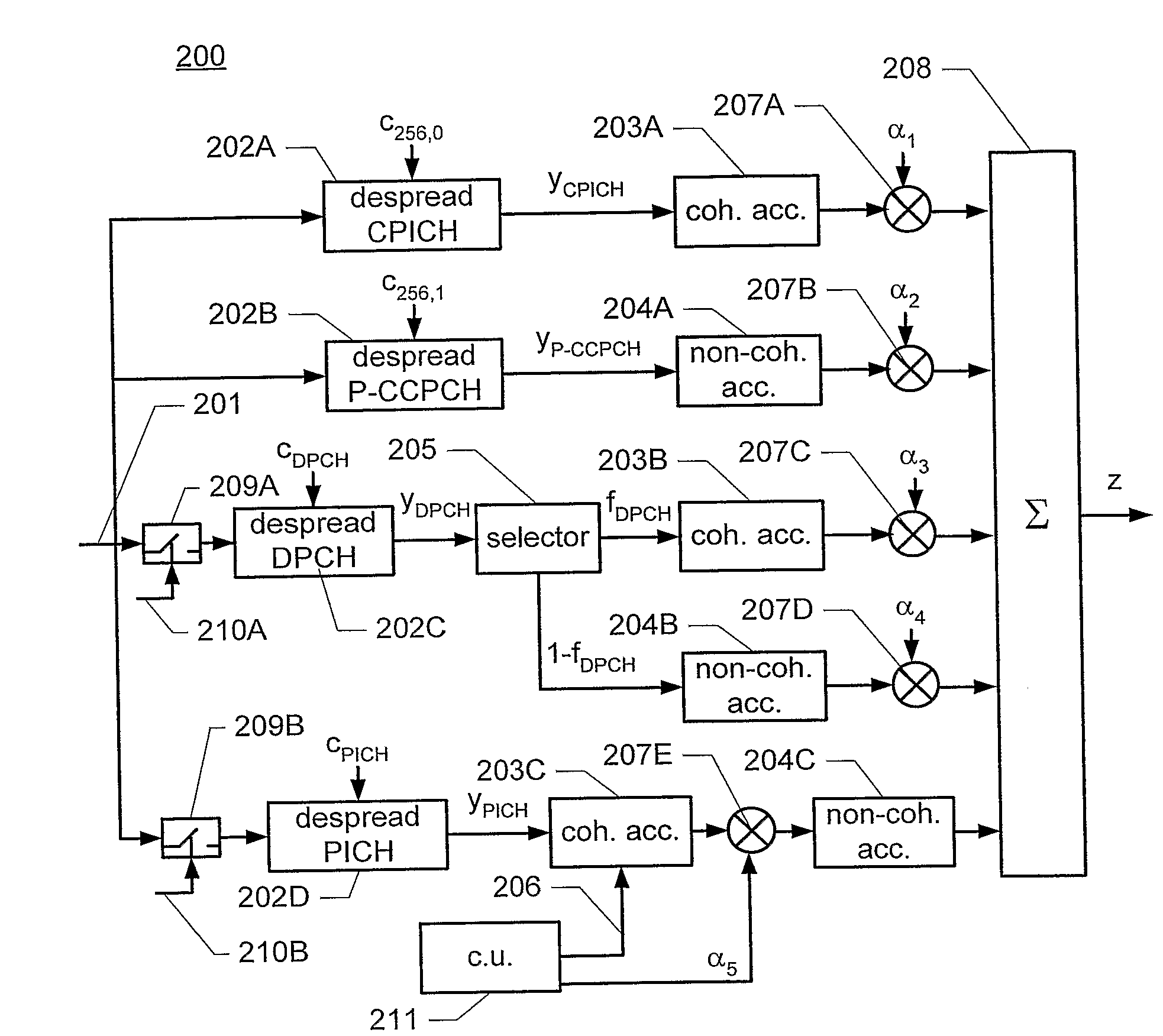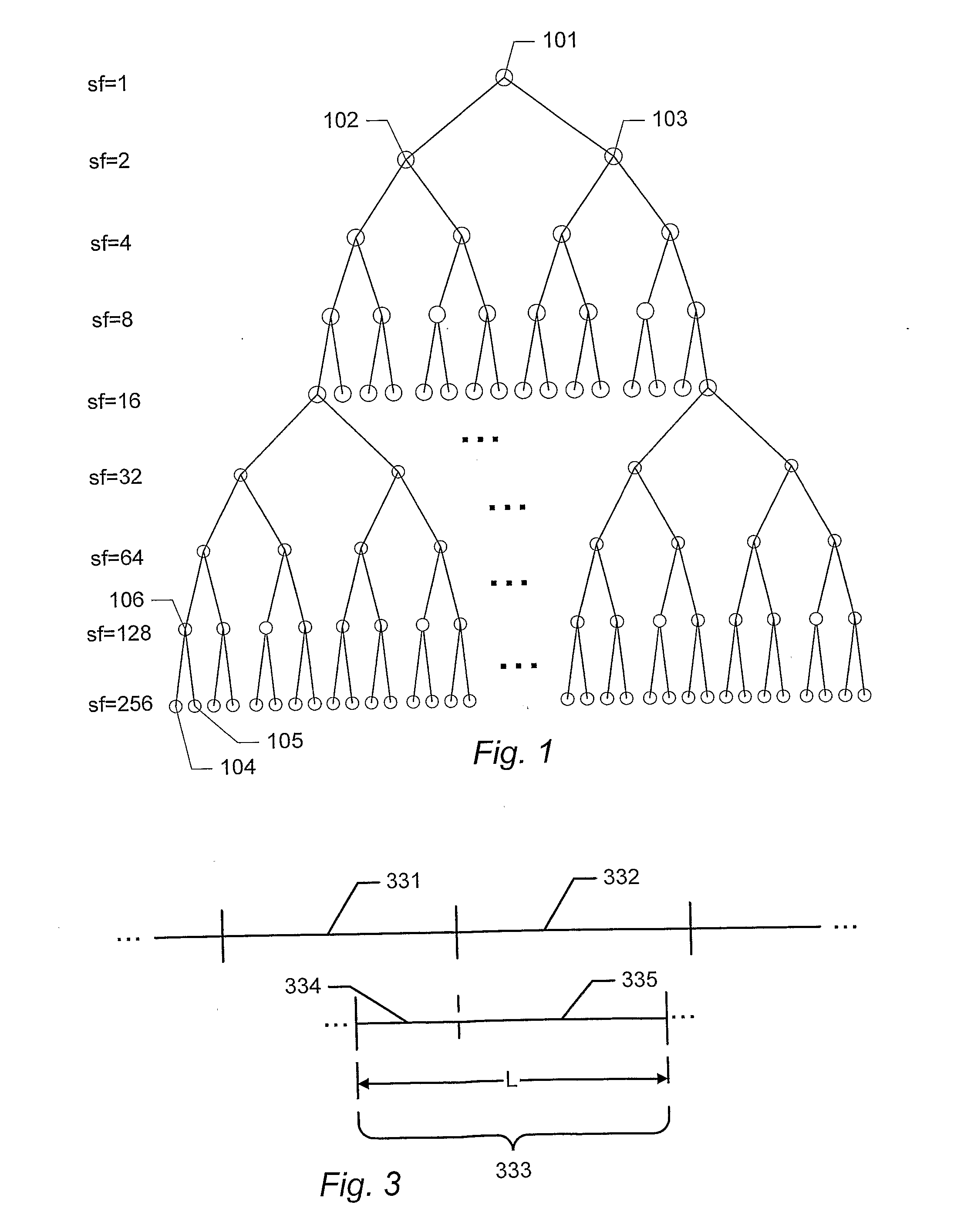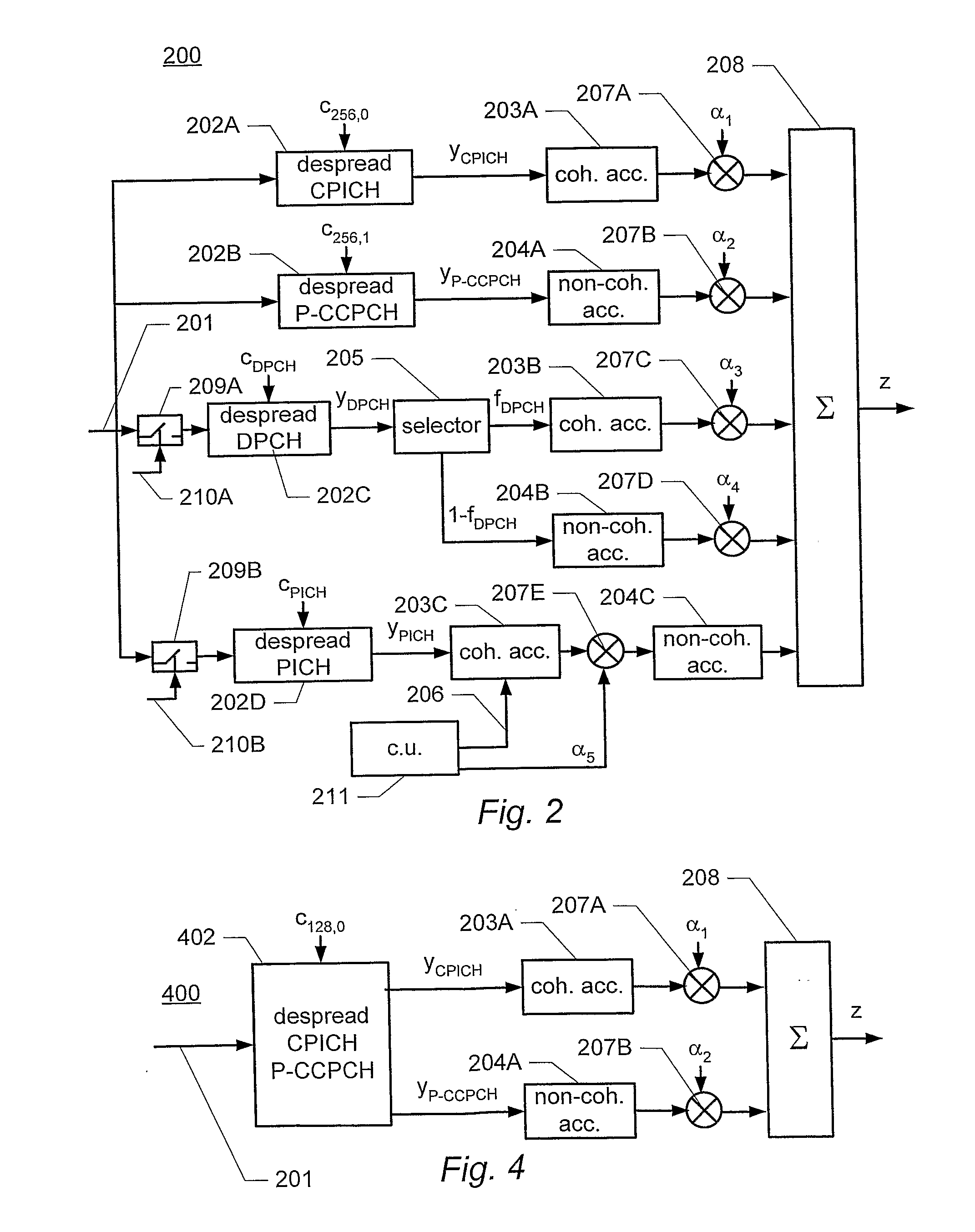Determinting a Detection Signal in a Spread Spectrum Communications System
a technology of a communication system and a detection signal, applied in the direction of multiplex communication, electrical equipment, transmission, etc., to achieve the effect of improving the overall detection performance of the combined signal and further improving the detection performan
- Summary
- Abstract
- Description
- Claims
- Application Information
AI Technical Summary
Benefits of technology
Problems solved by technology
Method used
Image
Examples
Embodiment Construction
[0088]FIG. 1 illustrates the code tree of an embodiment of channelization codes used in a WCDMA system. An example of such a system is the 3GPP WCDMA system specified by the 3rd Generation Partnership Project (3GPP). A more detailed description of an example of the 3GPP WCDMA system can be found in the specification of the September 2004 release of 3GPP Release 5 published by the 3rd Generation Partnership Project (3GPP) and available on the Internet on www.3gpp.orq. In particular, the channel structure of this example of a WCDMA system is described in 3GPP TS 25.211 (http: / / www.3gpp.org / ftp / Specs / 2004-09 / Rel-5 / 25_series / 25211-560.zip). The multiplexing and channel coding of this example is described in 3GPP TS 25.212 (http: / / www.3gpp.orq / ftp / Specs / 2004-09 / Rel-5 / 25_series / 25212-590.zip). The spreading and modulation of this example is described in 3GPP TS 25.213 (http: / / www.3gpp.org / ftp / Specs / 2004-09 / Rel-5 / 25_series / 25213-550.zip). The physical layer procedures of this example are d...
PUM
 Login to View More
Login to View More Abstract
Description
Claims
Application Information
 Login to View More
Login to View More - R&D
- Intellectual Property
- Life Sciences
- Materials
- Tech Scout
- Unparalleled Data Quality
- Higher Quality Content
- 60% Fewer Hallucinations
Browse by: Latest US Patents, China's latest patents, Technical Efficacy Thesaurus, Application Domain, Technology Topic, Popular Technical Reports.
© 2025 PatSnap. All rights reserved.Legal|Privacy policy|Modern Slavery Act Transparency Statement|Sitemap|About US| Contact US: help@patsnap.com



